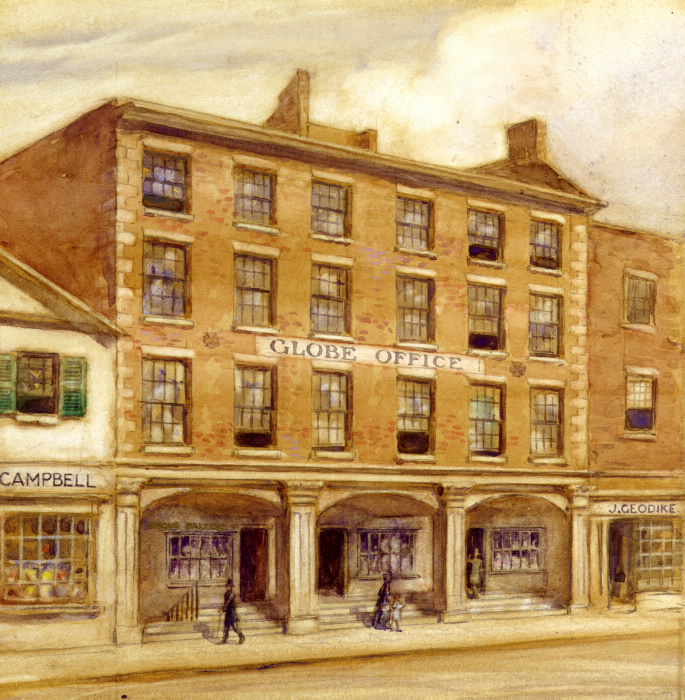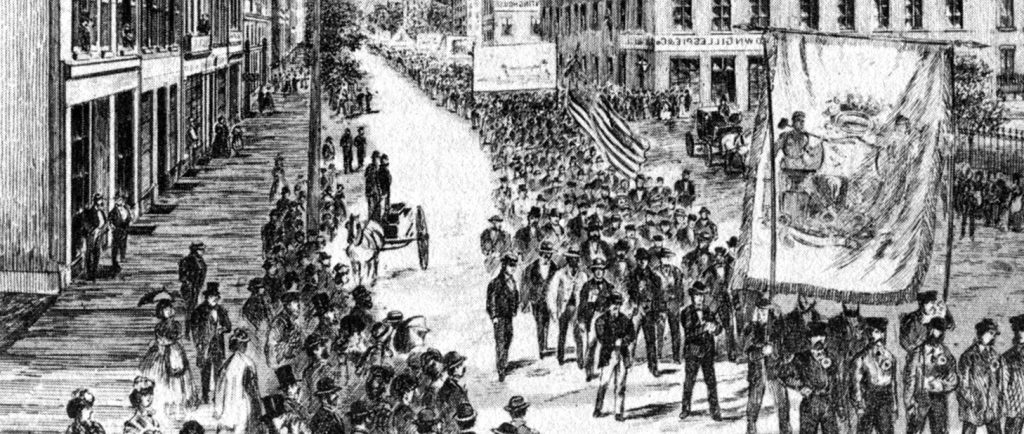
In 1832, Toronto’s printers organized the city’s first union, the Toronto Typographical Society. Four years later, they struck for better wages against local newspaper publishers. George Brown, owner of The Globe, became a sworn enemy of the union, which represented skilled typesetters (before the invention of the linotype machine).

In 1872, the Nine Hour Movement emerged to demand a nine-hour day for all workers, and developed a coordinated strategy of general strikes to start in May 1872 in Hamilton, Ontario. But the Toronto printers walked out in March. Brown led the other newspaper publishers in resisting the workers’ demands and used the Criminal Code to have their leaders arrested for “seditious conspiracy.”
In April 1872, 10,000 supporters of the printers rallied at Queen’s Park, site of the provincial government. The printers were freed when Brown’s political opponent, Sir John A. Macdonald, passed a new Trade Unions Act to legalize unions. The printers, nonetheless, lost their strike.
The Toronto Typographical Union Local 91 is now part of Communications, Energy and Paperworkers (CEP) Local 591G, the oldest continuous union in Toronto.